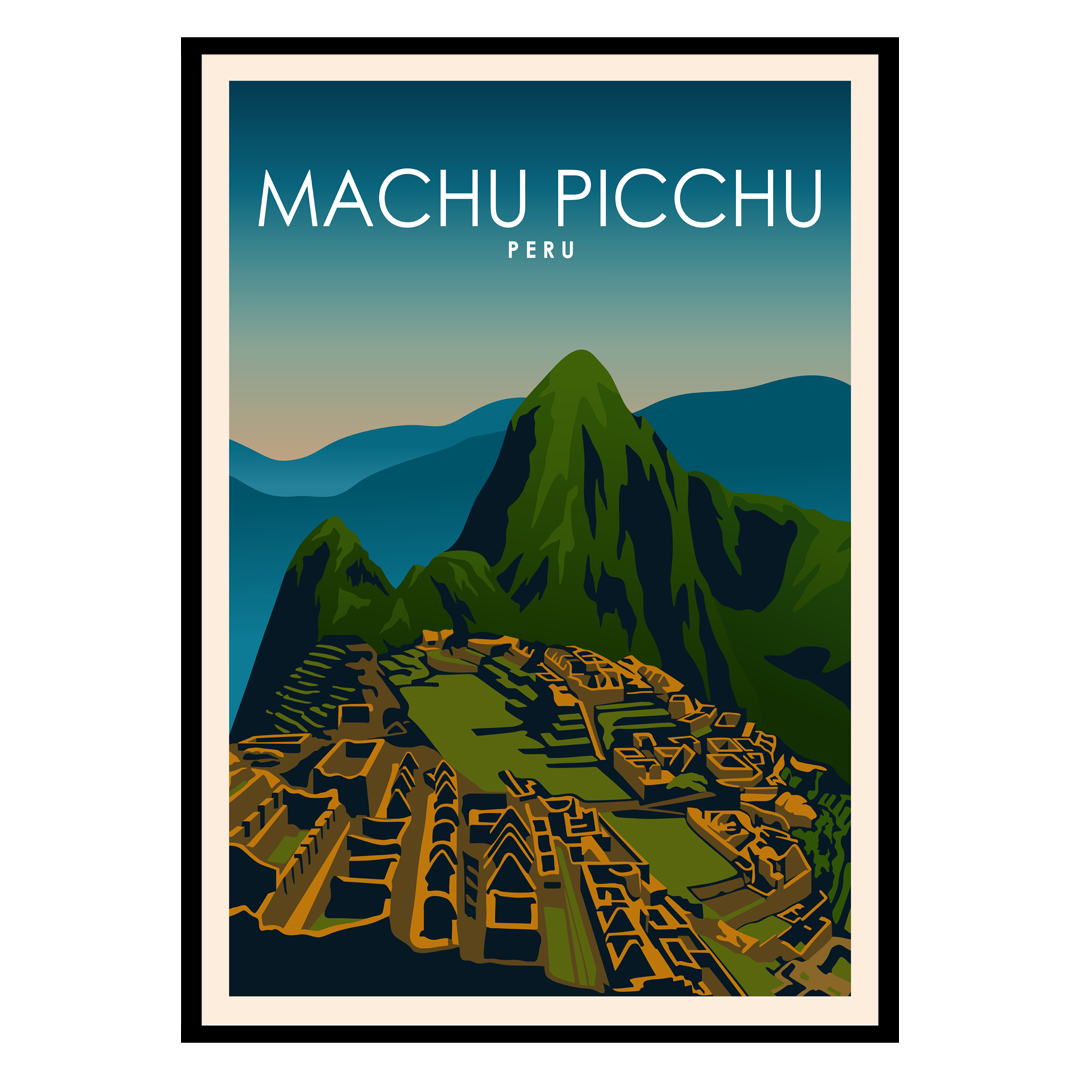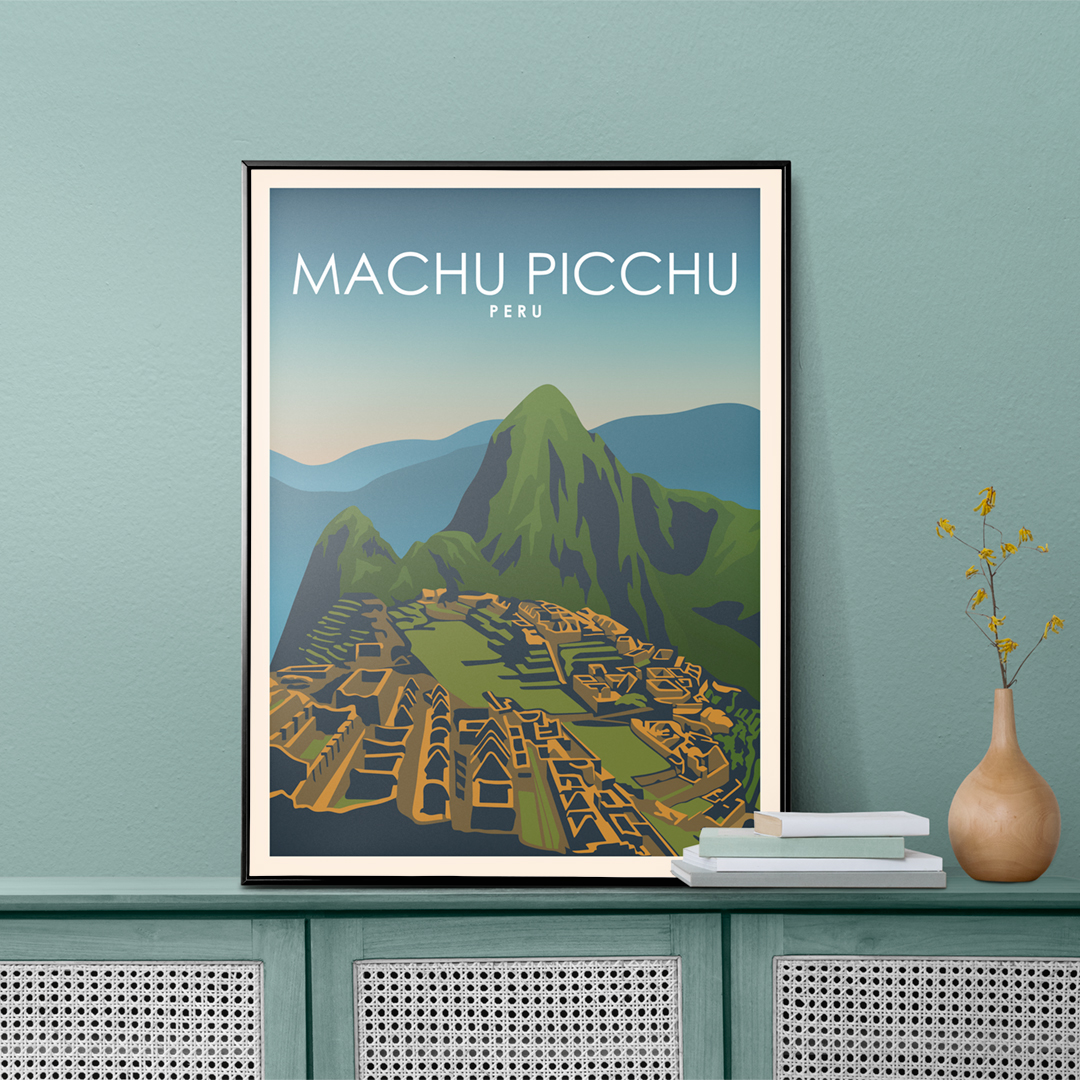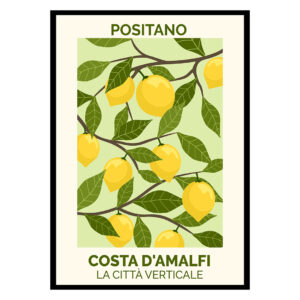This vintage poster of Machu Picchu is perfect for adding a touch of rustic charm to your home. The beautiful ruins of the ancient Incan city make for an eye-catching focal point, and the muted colors give it a timeless feel. The beautiful scenery and architecture make it a must-see destination.
Machu Picchu Peru Poster
€15 – €49Price range: €15 through €49
Machu Picchu is a 15th-century Inca citadel located in the Eastern Cordillera of southern Peru on a 2,430-meter (7,970 ft) mountain ridge. It is located in the Machupicchu District within Urubamba Province above the Sacred Valley, which is 80 kilometers (50 mi) northwest of Cusco. The Urubamba River flows past it, cutting through the Cordillera and creating a canyon with a tropical mountain climate.
For most speakers of English or Spanish, the first ‘c’ in Picchu is silent. In English, the name is pronounced /ˌmɑːtʃuː ˈpiːtʃuː/ or /ˌmætʃuː ˈpiːktʃuː/, in Spanish as [ˈmatʃu ˈpitʃu] or [ˈmatʃu ˈpiktʃu],[9] and in Quechua (Machu Pikchu)[10] as [ˈmatʃʊ ˈpɪktʃʊ].
The Incas, in contrast with the Mayans, had no written language, and no European visited the site until the 19th century, so far as is known. There are, therefore, no written records of the site while it was in use. The names of the buildings, their supposed uses, and their inhabitants are all the product of modern archeologists, on the basis of physical evidence, including tombs at the site.
Most recent archaeologists believe that Machu Picchu was constructed as an estate for the Inca emperor Pachacuti (1438–1472). Often referred to as the “Lost City of the Incas”, it is the most familiar icon of Inca civilization. The Incas built the estate around 1450 but abandoned it a century later, at the time of the Spanish conquest. According to the new AMS radiocarbon dating, it was occupied from c. 1420–1532. Historical research published in 2022 claims that the site was probably called Huayna Picchu by the Inca, as it exists on the smaller peak of the same name.
Machu Picchu was built in the classical Inca style, with polished dry-stone walls. Its three primary structures are the Intihuatana, the Temple of the Sun, and the Room of the Three Windows. Most of the outlying buildings have been reconstructed in order to give visitors a better idea of how they originally appeared. By 1976, 30% of Machu Picchu had been restored and restoration continues.
Machu Picchu was declared a Peruvian Historic Sanctuary in 1981 and a UNESCO World Heritage Site in 1983. In 2007, Machu Picchu was voted one of the New Seven Wonders of the World in a worldwide internet poll.
Machu Picchu museum-quality poster made on thick and durable matte paper. Add a wonderful accent to your room and office with these posters that are sure to brighten any environment.
• Paper thickness: 0.26 mm (10.3 mil)
• Paper weight: 189 g/m² (5.57 oz/y²)
• Opacity: 94%
• ISO brightness: 104%
• Giclée printing quality
• 21 × 30 cm posters are size A4
• Blank product sourced from Japan
| Weight | N/A |
|---|






There are no reviews yet.